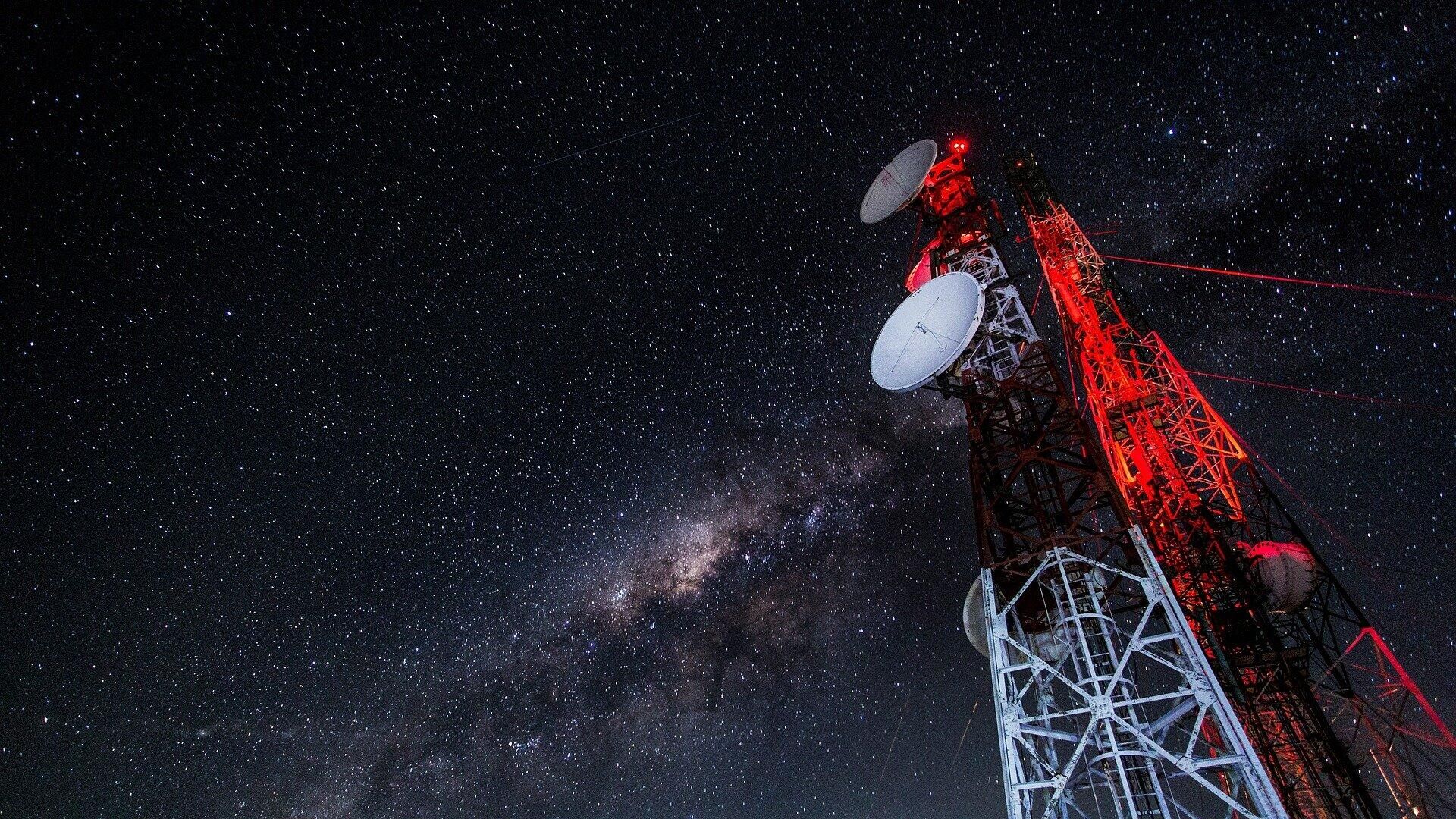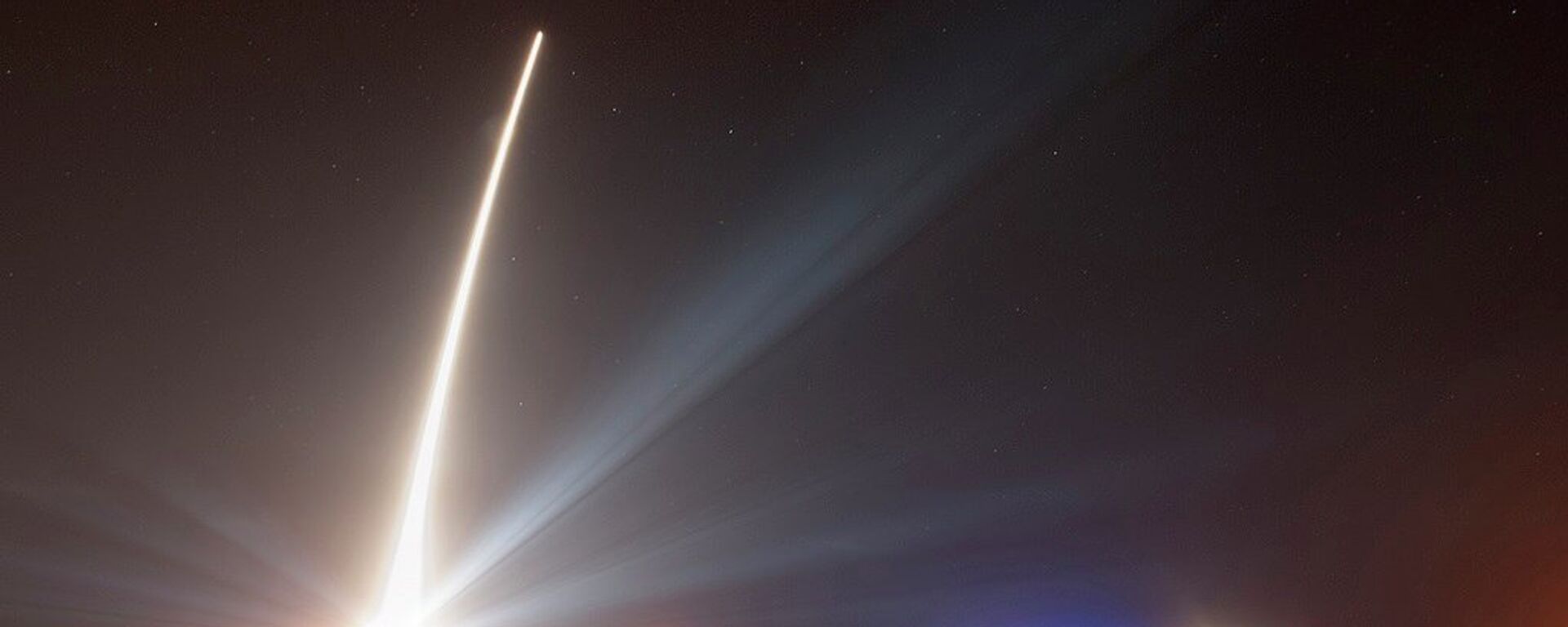https://sputnikglobe.com/20220603/us-military-operators-fear-pentagons-satcom-may-fall-victim-to-adversaries-russia-china--1095956457.html
US Military Operators Fear Pentagon’s SATCOM May Fall Victim to Adversaries Russia, China
US Military Operators Fear Pentagon’s SATCOM May Fall Victim to Adversaries Russia, China
Sputnik International
For the past decade, Pentagon officials have called for an increased emphasis on enhancing the defense capabilities of US orbital communications tech and... 03.06.2022, Sputnik International
2022-06-03T02:59+0000
2022-06-03T02:59+0000
2023-04-13T12:44+0000
russia
china
us
1967 outer space treaty
satellite communication system
dan coats
government business council
us military
low earth orbit
space
https://cdn1.img.sputnikglobe.com/img/07e6/06/03/1095956352_0:0:1920:1080_1920x0_80_0_0_a172c201c4a1a37192e1e757b1d6d76d.jpg
Nearly eight out of 10 US Department of Defense (DoD) employees believe future warfighting efforts will require advanced space-based networking capability to satisfy operational and mission needs, according to an annual survey conducted by the Government Business Council (GBC) and Viasat.The GBC is the research affiliate of the Government Executive Media Group, a publication recently acquired by Chicago-based private equity firm Growth Catalyst Partners. Viasat, headquartered in Carlsbad, California, is a commercial SATCOM firm that, among other things, offers services to both the US government and military.Researchers behind the third annual ‘State of Military Communications Technologies’ survey polled a random sample of 312 DoD personnel from August 2021 to January 2022 and found that 68% of respondents believe near-peer adversaries will match or exceed US military communications capabilities within five years.However, only 19% of those surveyed said their agency or service was actively making investments in advanced satellite communications (SATCOM) systems to support modern warfighting needs.At the same time, communications blackouts have been on a steady decline, according to study data.Exactly 40% of respondents said that they believe their agency or service is adequately prepared for a cyberattack targeting US defense communications tech/infrastructure. At the same time, 28% of those polled said they do not believe their sector has adequately prepared for such an event.“Government is recognizing the need to modernize defense communications and the value of commercial capabilities,” said Viasat President Craig Miller in a quoted statement.Washington has made it no secret that it believes both Russia and China pose a significant threat to US orbital infrastructure. Dan Coats, Trump’s director of National Intelligence from 2017 to 2019, claimed in a 2018 Joint Staff intelligence directorate (J-2) report that Beijing and Moscow “are increasingly considering attacks against satellite systems as part of their future warfare doctrine.”Coats went on to claim that both countries “will continue to pursue a full range of anti-satellite weapons as a means to reduce US military effectiveness.”The J-2 report warned that offensive capabilities against low-Earth orbit satellites could be in place by 2020. Coats also warned the Congressional Defense Committee that Russia has a “diverse suite of capabilities to affect satellites in all orbital regimes” and possesses an airborne laser that could be used against US satellites.Russia, China, and the US are all members of the UN Committee on the Peaceful Uses of Outer Space, established in 1959, and are tied to the Outer Space Treaty of 1967.
https://sputnikglobe.com/20220418/us-to-ban-anti-satellite-weapons-tests-to-avoid-creating-space-debris-reports-say-1094869778.html
https://sputnikglobe.com/20180418/russia-china-develop-disable-usa-satellites-1063669498.html
china
low earth orbit
Sputnik International
feedback@sputniknews.com
+74956456601
MIA „Rossiya Segodnya“
2022
News
en_EN
Sputnik International
feedback@sputniknews.com
+74956456601
MIA „Rossiya Segodnya“
Sputnik International
feedback@sputniknews.com
+74956456601
MIA „Rossiya Segodnya“
china, us, 1967 outer space treaty, satellite communication system, dan coats, government business council, us military, low earth orbit, space, pentagon
china, us, 1967 outer space treaty, satellite communication system, dan coats, government business council, us military, low earth orbit, space, pentagon
US Military Operators Fear Pentagon’s SATCOM May Fall Victim to Adversaries Russia, China
02:59 GMT 03.06.2022 (Updated: 12:44 GMT 13.04.2023) For the past decade, Pentagon officials have called for an increased emphasis on enhancing the defense capabilities of US orbital communications tech and infrastructure that have become vital to the nation’s armed forces and economy in recent decades. Such concerns have grown as modern warfighting requirements call for advanced SATCOM systems.
Nearly eight out of 10 US Department of Defense (DoD) employees believe future warfighting efforts will require advanced space-based networking capability to satisfy operational and mission needs, according to an annual survey conducted by the Government Business Council (GBC) and Viasat.
The GBC is the research affiliate of the Government Executive Media Group, a publication recently acquired by Chicago-based private equity firm Growth Catalyst Partners. Viasat, headquartered in Carlsbad, California, is a commercial SATCOM firm that, among other things, offers services to both the US government and military.
Researchers behind the third annual ‘
State of Military Communications Technologies’ survey polled a random sample of 312 DoD personnel from August 2021 to January 2022 and found that
68% of respondents believe near-peer adversaries will match or exceed US military communications capabilities within five years.
However, only 19% of those surveyed said their agency or service was actively making investments in advanced satellite communications (SATCOM) systems to support modern warfighting needs.
At the same time, communications blackouts have been on a steady decline, according to study data.
“From 2019 to 2020, there was a 1 percentage point (pp) decrease in reported communications disruptions, and from 2020 to 2021, there was a 12pp decrease, suggesting growth in communications reliability,” researchers wrote in the May 10 release.
Exactly 40% of respondents said that they believe their agency or service is adequately prepared for a cyberattack targeting US defense communications tech/infrastructure. At the same time, 28% of those polled said they do not believe their sector has adequately prepared for such an event.
“Government is recognizing the need to modernize defense communications and the value of commercial capabilities,” said Viasat President Craig Miller in a quoted statement.
“But cultural change is often more difficult than technological change. DoD personnel see adversaries closing the capabilities gap and know new approaches are needed if the US is going to maintain an advantage.”
Washington has made it no secret that it believes both Russia and China pose a significant threat to US orbital infrastructure.
Dan Coats, Trump’s director of National Intelligence from 2017 to 2019,
claimed in a 2018 Joint Staff intelligence directorate (J-2) report that Beijing and Moscow
“are increasingly considering attacks against satellite systems as part of their future warfare doctrine.”Coats went on to claim that both countries “will continue to pursue a full range of anti-satellite weapons as a means to reduce US military effectiveness.”
The J-2 report warned that offensive capabilities against low-Earth orbit satellites could be in place by 2020. Coats also warned the Congressional Defense Committee that Russia has a “diverse suite of capabilities to affect satellites in all orbital regimes” and possesses an airborne laser that could be used against US satellites.
Russia, China, and the US are all members of the UN Committee on the Peaceful Uses of Outer Space, established in 1959, and are tied to the Outer Space Treaty of 1967.




